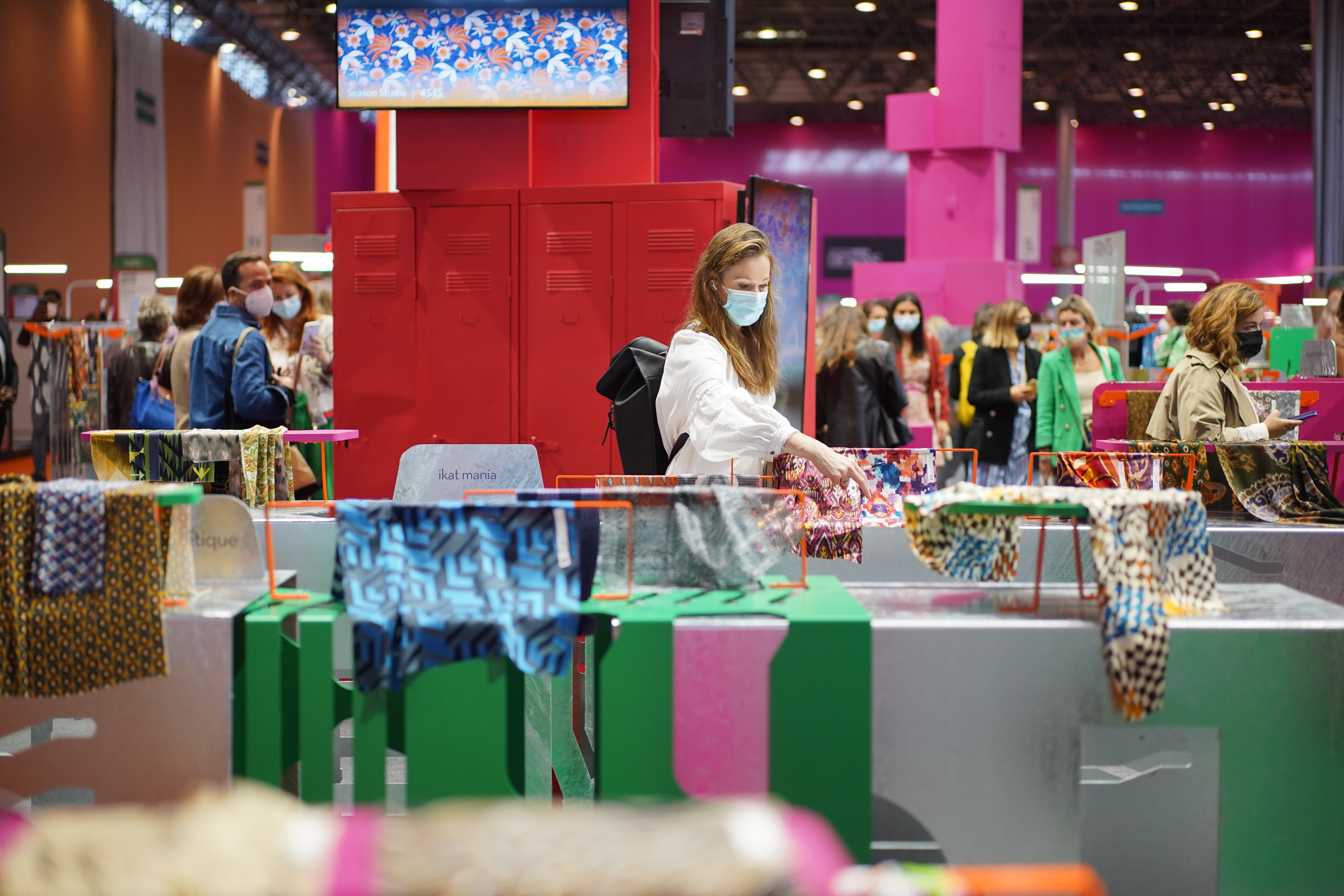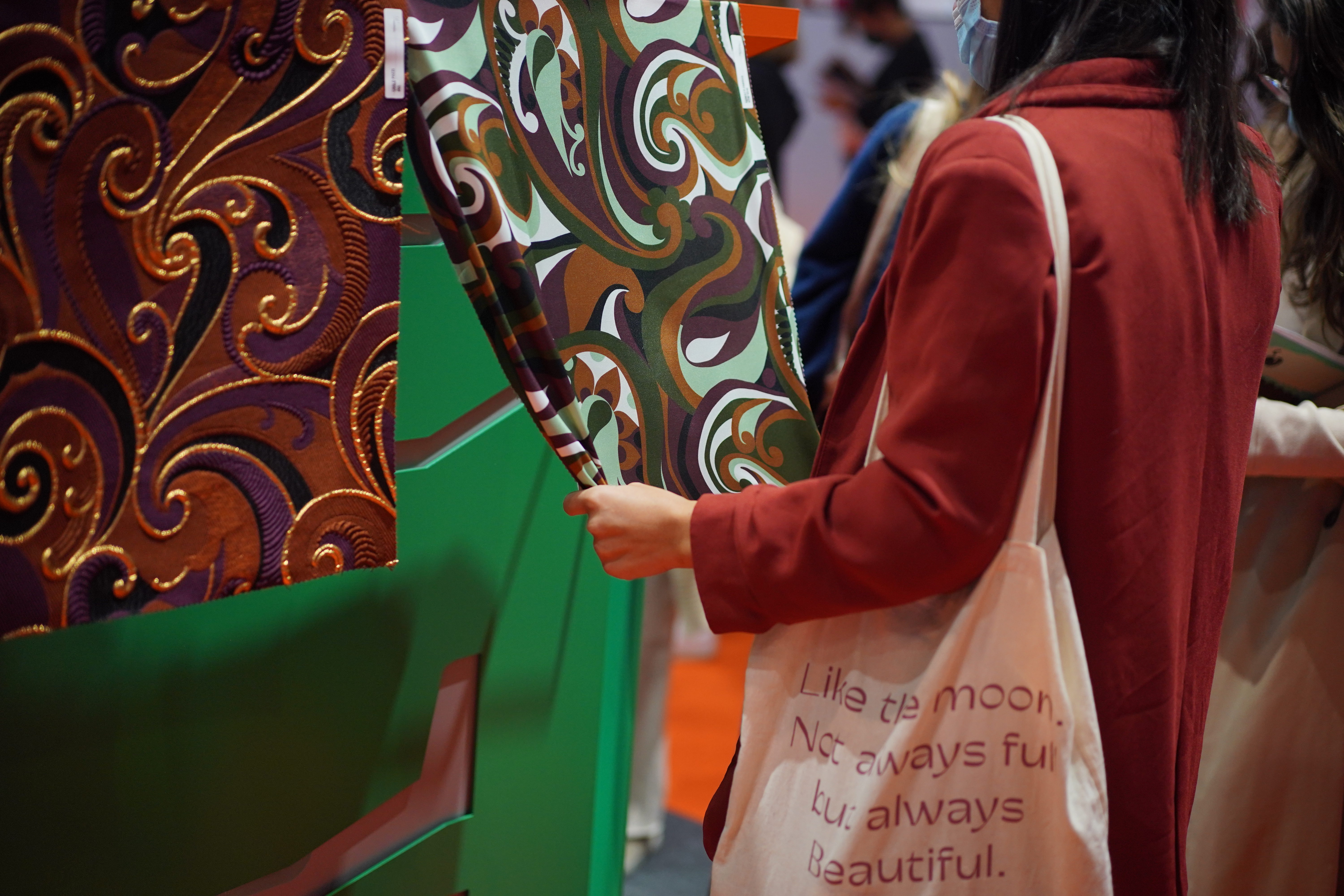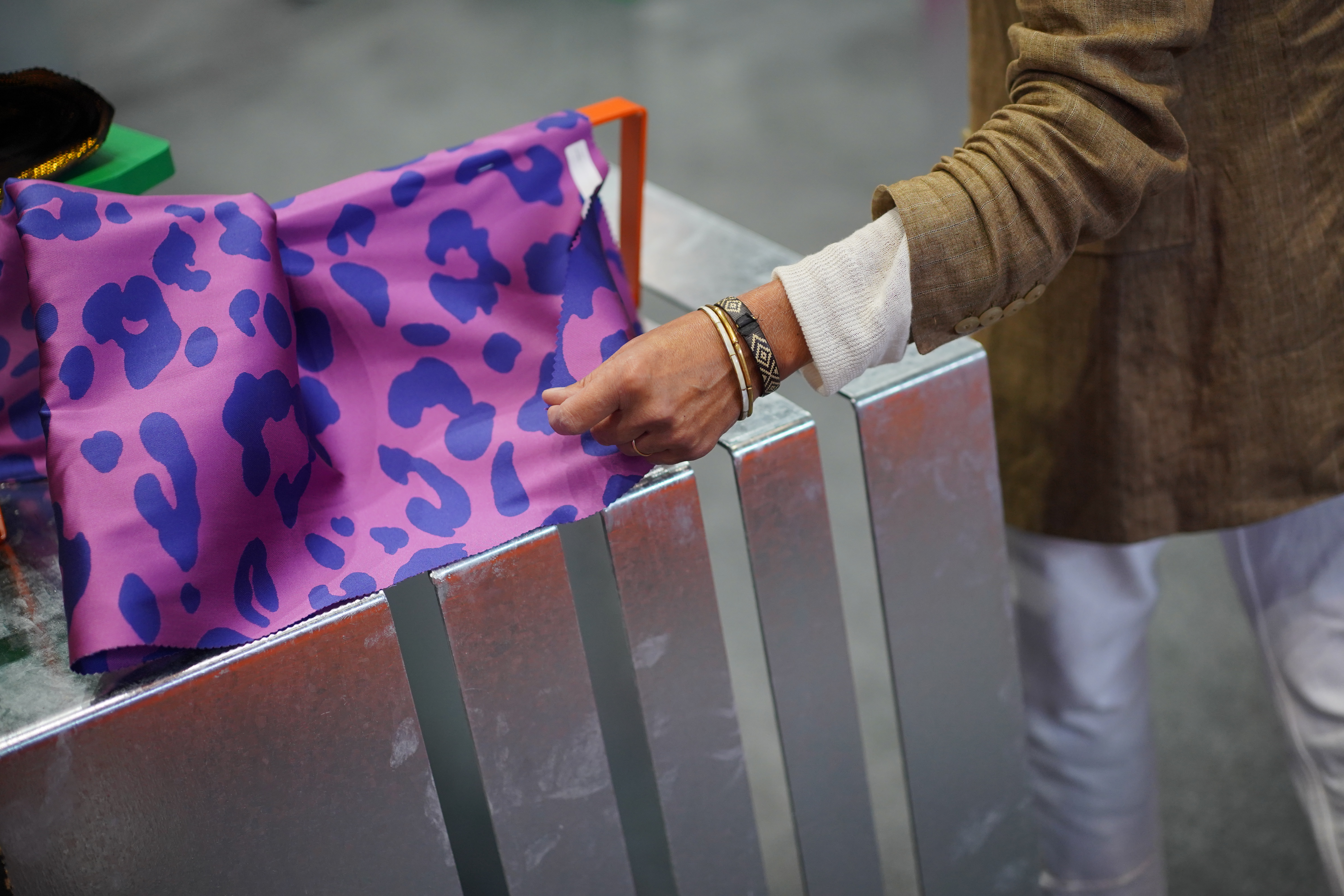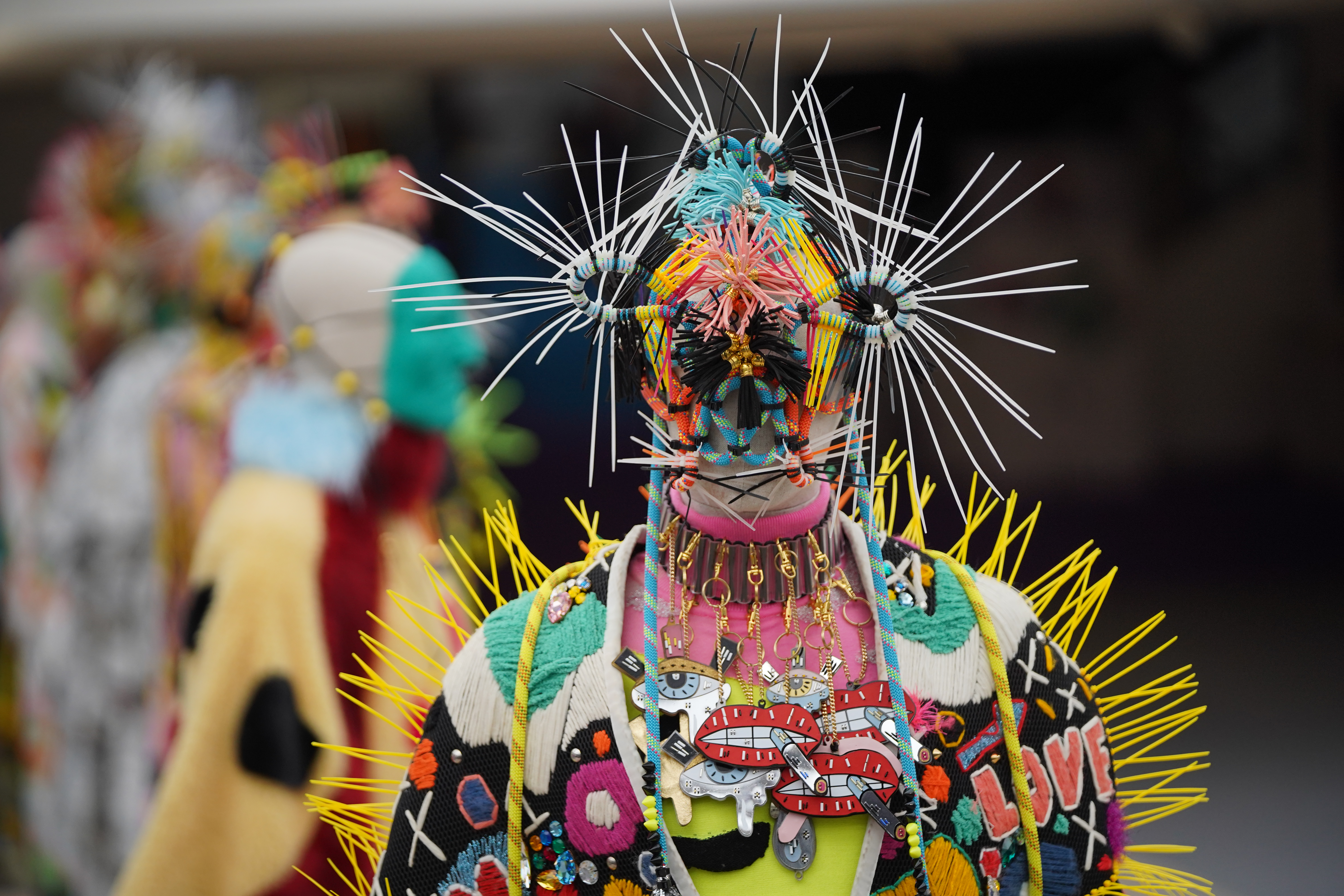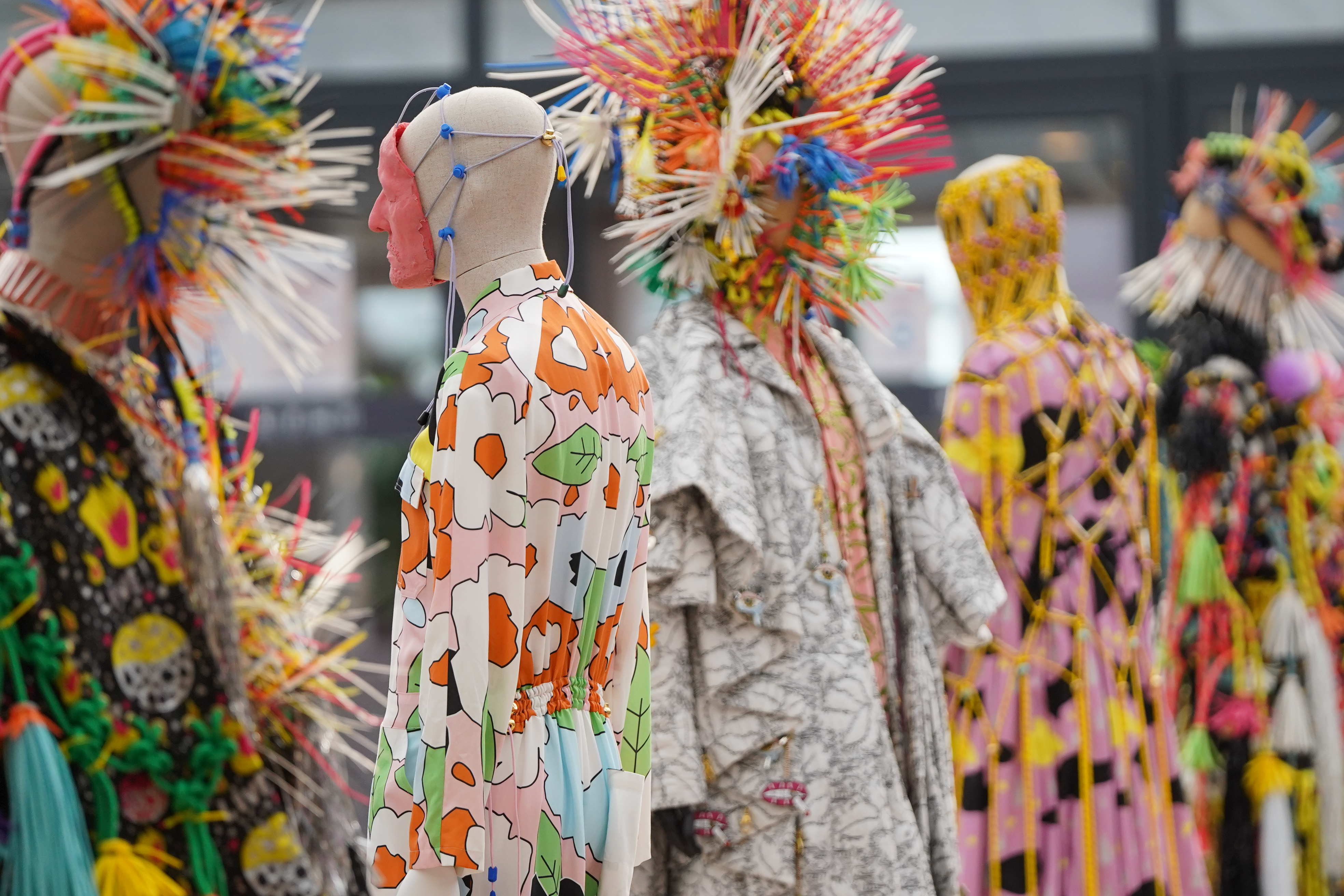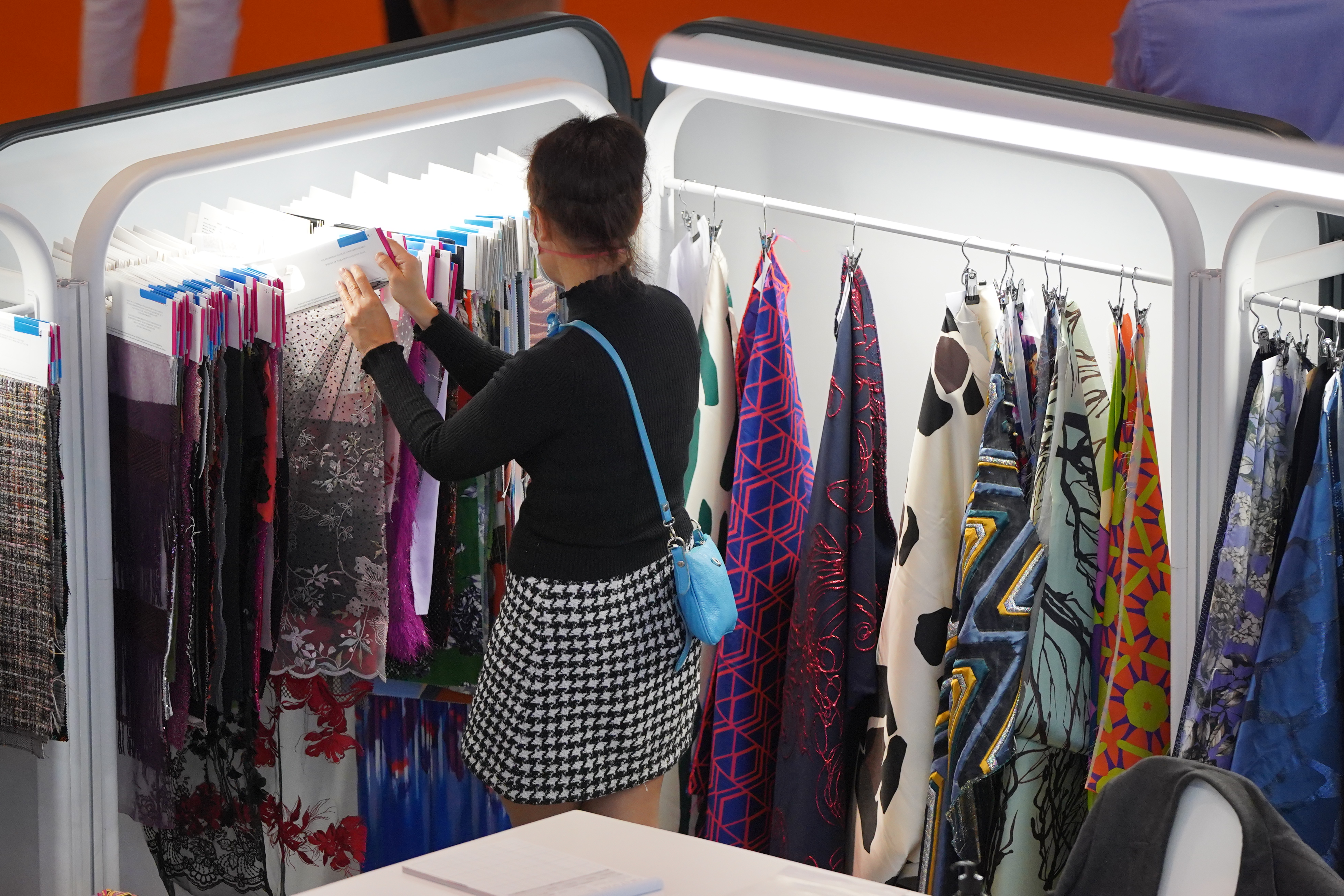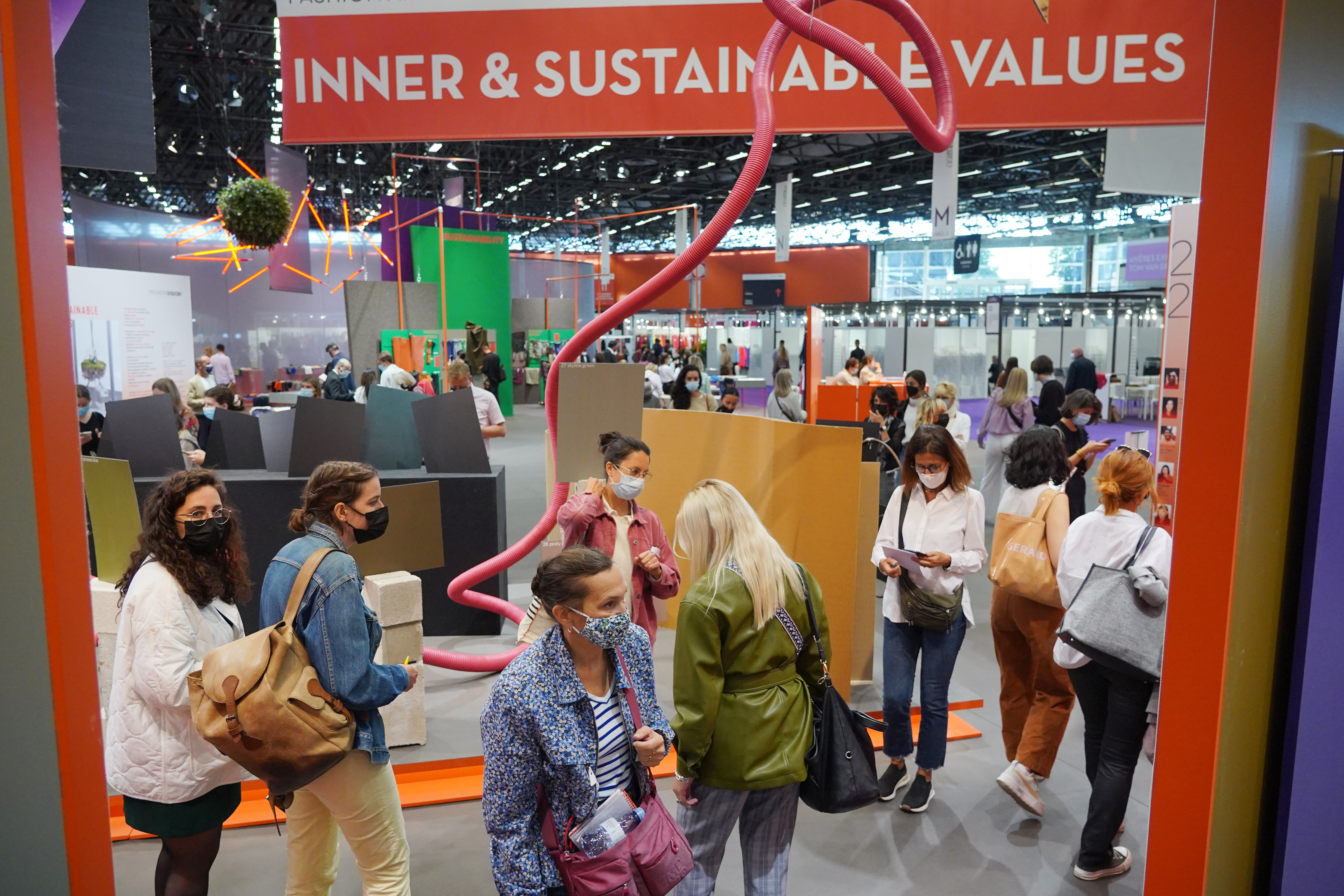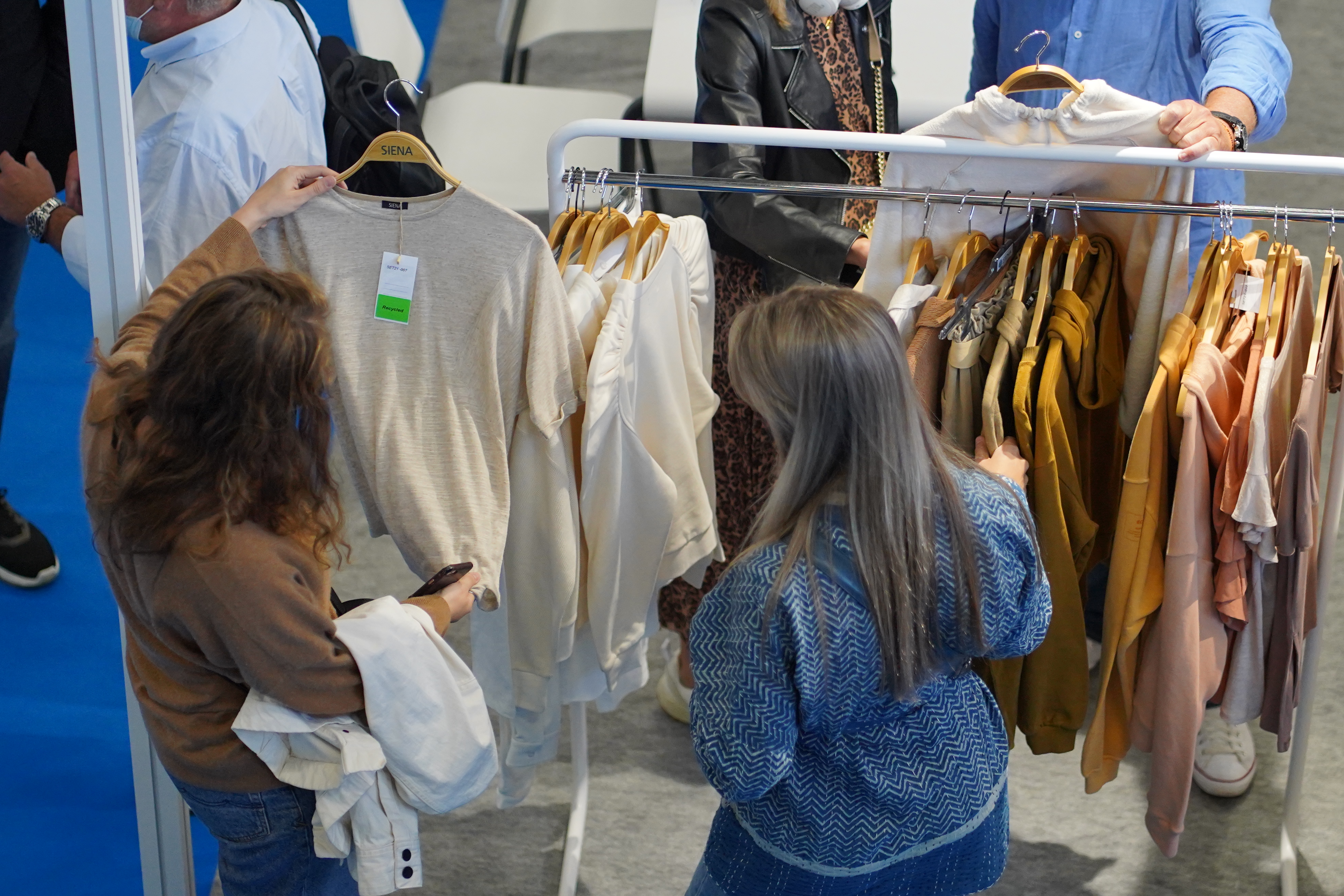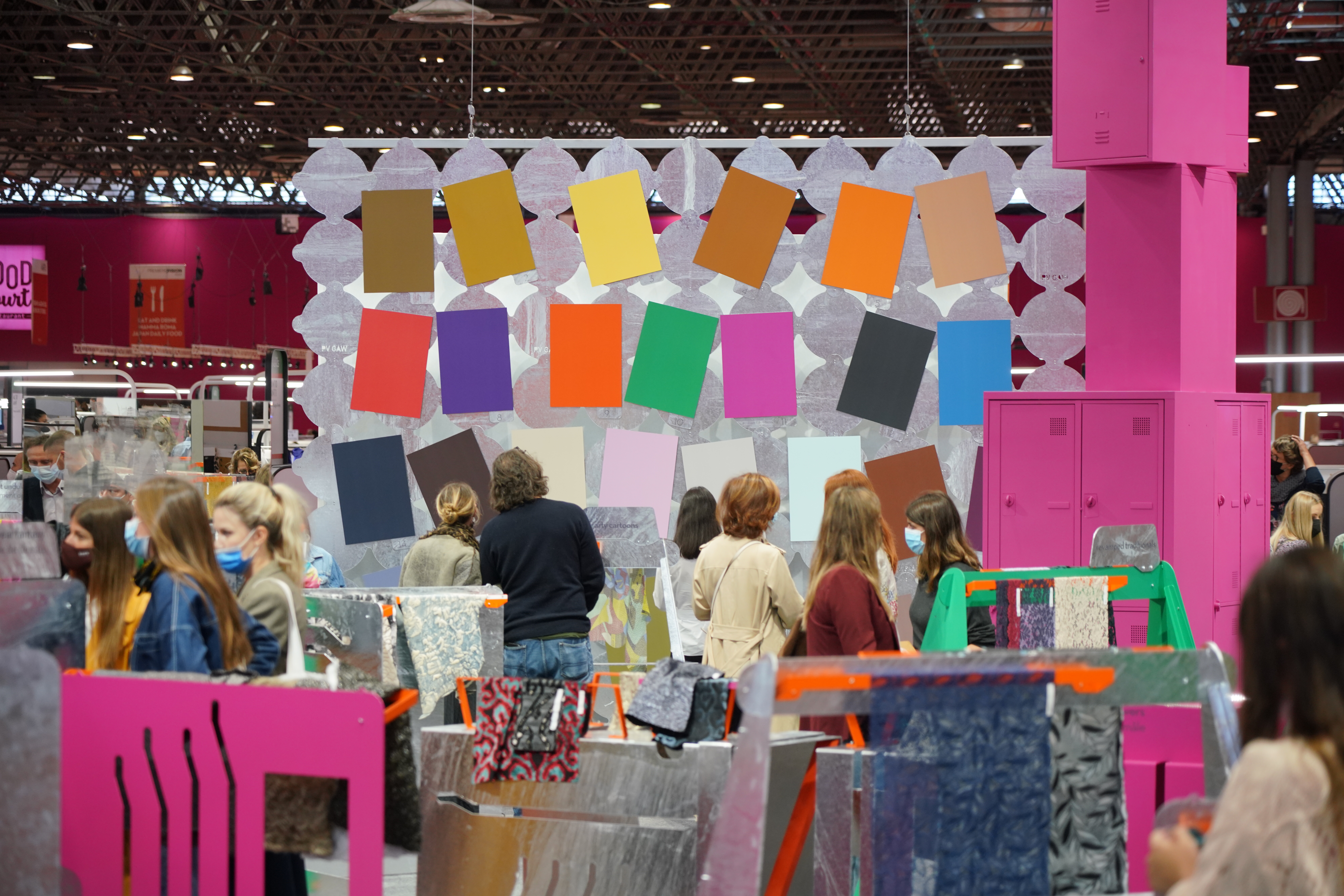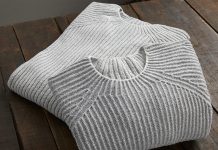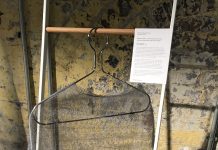Knitwear tipped for stardom for 2022/23 in a particularly colourful winter season.
“It’s going to be a knit autumn-winter – from head to toe,“ announced the trend section of Premiere Vision, in the first face to face show since the pandemic. The physical show was accompanied by a digital market running in parallel during the week.
Gallant attempts recreated the fashion tasting, discussions and launches which had become traditional features at Premiere Vision, covering various topics based around fashion tasting, intimately connected with eco matters, circular economies, provenance and sustainability.
The Smart Creation area continued to showcase the eco story developments including information signalling recycling, saving natural resources, and traceability. More than 443 fabric producers exhibited over the period. The main design feature was the sheer number of unusually colourful and flamboyant ideas.
Products increasingly labelled with point-of-sale information on garments include QR, swing tickets and more certification and verifiable provenance. DNA based technology to identify textile raw materials to finished products is being developed in several areas including linen and wool. FibreTrace is linking with Higg technology tools.
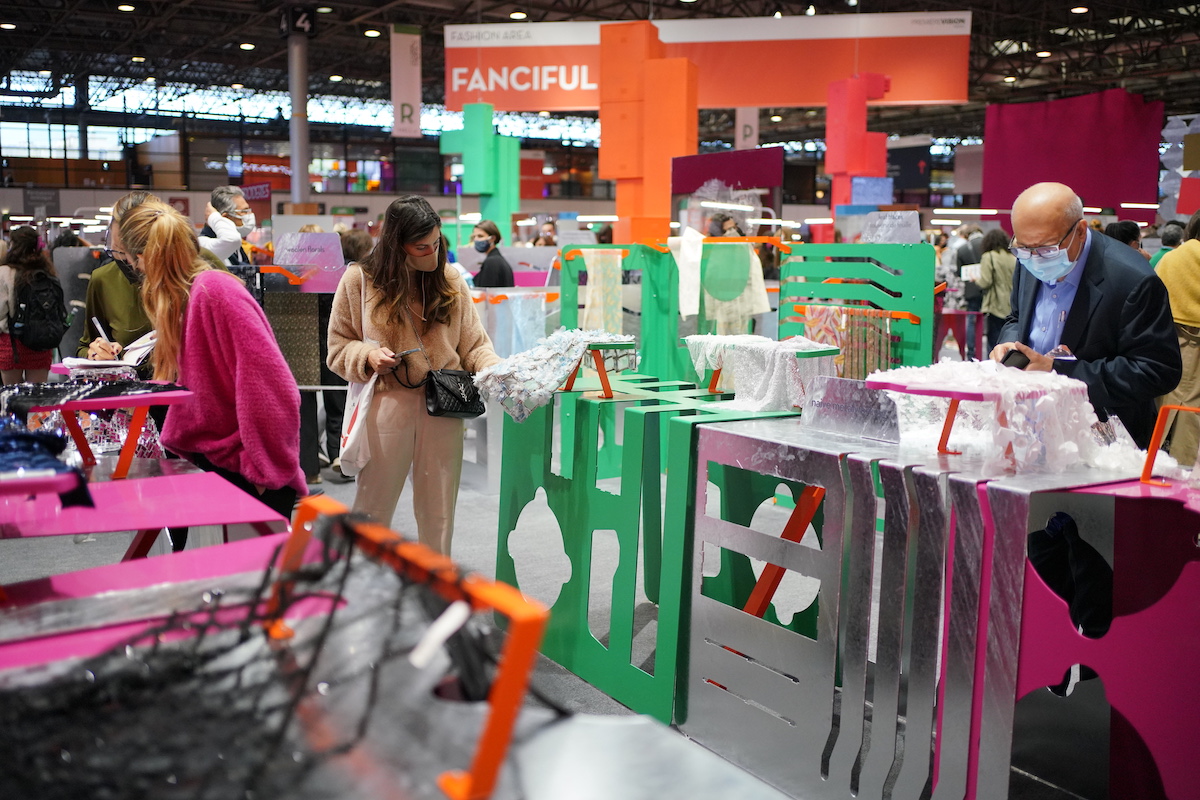
PV put its stall out by describing the season’s offer as veritable artisans of modernity, spinners, weavers, tanners and accessory component manufacturers are revisiting their tool kits to offer optimal sustainability. Innovation focuses on raw materials; now the desire to transform creations into virtuous versions is applied to the entire product life cycle.
Fluid fashion
The fashion mood is more fluid, leaning towards lightweight yet cosy fabrics with brushed surfaces and decoration and a great deal of colour. It includes the current hybrid looks of mixing different styles, weights, and materials, with jacquards, patchwork effects and contrasting elements. Lightweight jerseys in large colour ranges and a variety of designs were in the collections displayed on the digital pages of the PV market.
Knitwear production has been gearing up as restrictions relax; not just because it is quicker, but because the mood includes diversified weights designed for different garments aimed at the full gamut of clothing; body-hugging underlayers, tops, dresses and jackets. The natural eco attributes of fibres like cotton, Merino and linen, alpaca, mohair, silk, are joined by recycled polyesters and the circular production of manmade fibres in knitted garments mixed with other media.
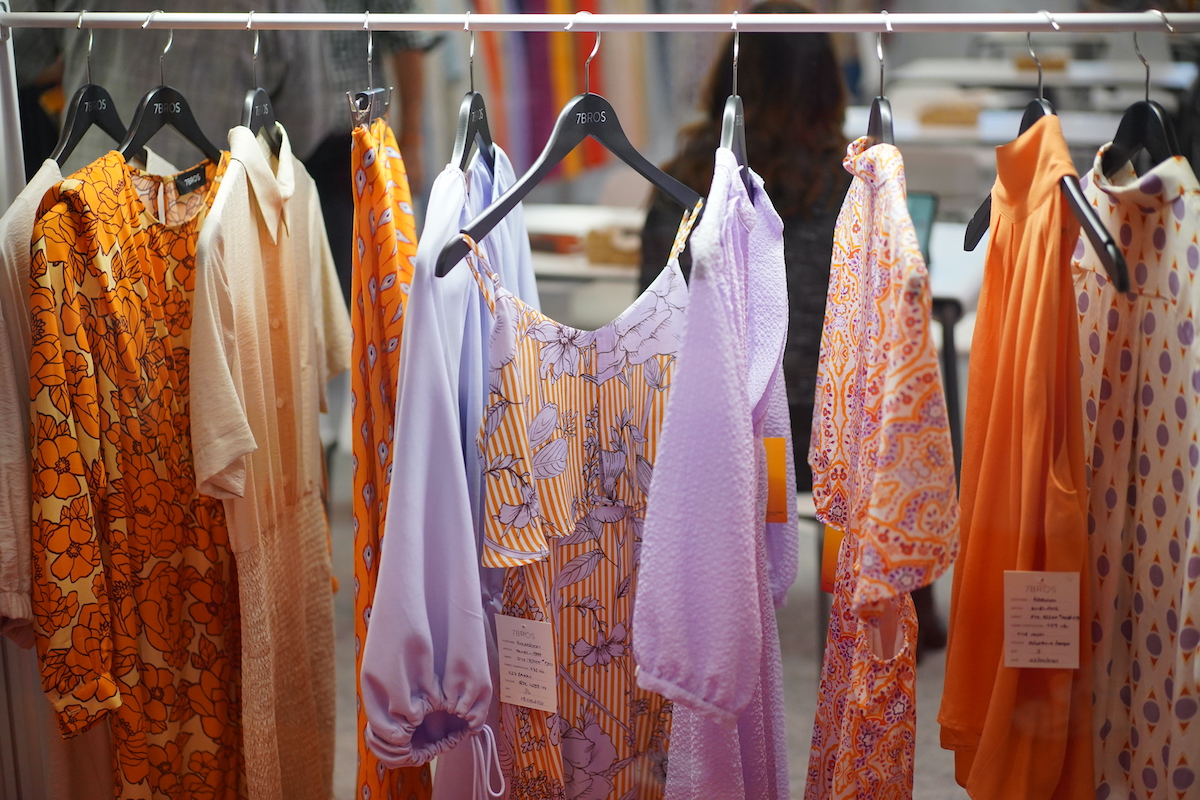
A stimulating scene of fabrics, yarns and accessories in the halls saw many oversize, multi-coloured motifs and buyers pictured holding coloured swatches and samples up for examination in a marketplace atmosphere.
Fantasy plays a key role in most collections, with opulent shine, colourful prints and spectacular all-over jacquards. Fantasy is called for even in plains. Stitch interplays and novel quiltings lend products a unique look, while brushed effects decorative and warm.
Soft fabrics and yarns
Soft and comforting fabrics are mentioned at every turn. Supple and enveloping terries give a soft thickness. Very fine woollens and soft knits reflect the search for comfort. Sweaters take florals and animal motifs as well as traditional Fair Isles to mix with mixed bright areas of colour and tones from children’s wear to womenswear to achieve the season’s verve and elan. Lock down comfort continues, and revisited formality was softened with a touch of splendour and glamour.
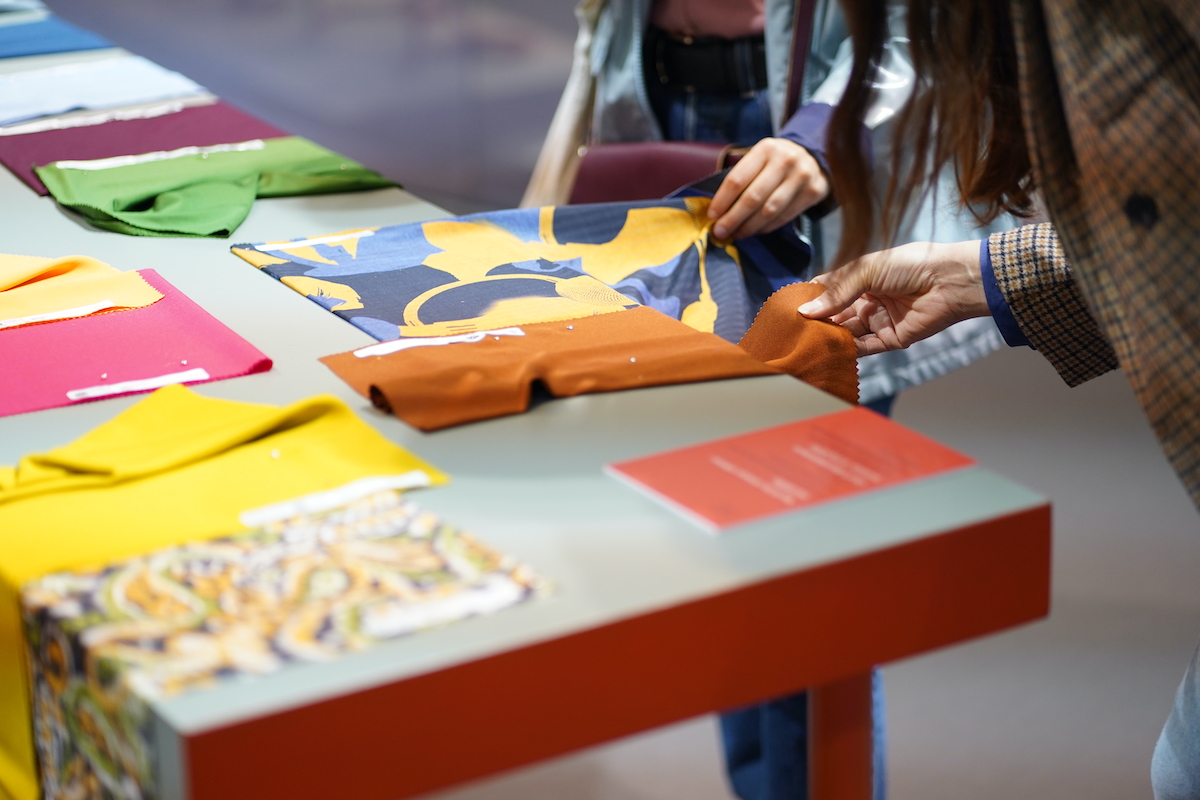
Hand knitting has grown and led to a renewed interest in stitches, elaborate textures, and colour combinations interpreted in mass production original designs and reworked traditional patterns.
New ideas
Eurojersey this season majored on a swimwear focus; Sensitive Fabrics design covers several areas from sporting to exotic. Here the floral element characteristic of the new seasons, is exploited as a timeless theme treated with modern influences. The new Sensitive Fabrics designs are based on inspiration from vintage swimwear glamour, with colour from pastels to strong toned prints and a great used of retro patterning described as free, romantic and sensual.
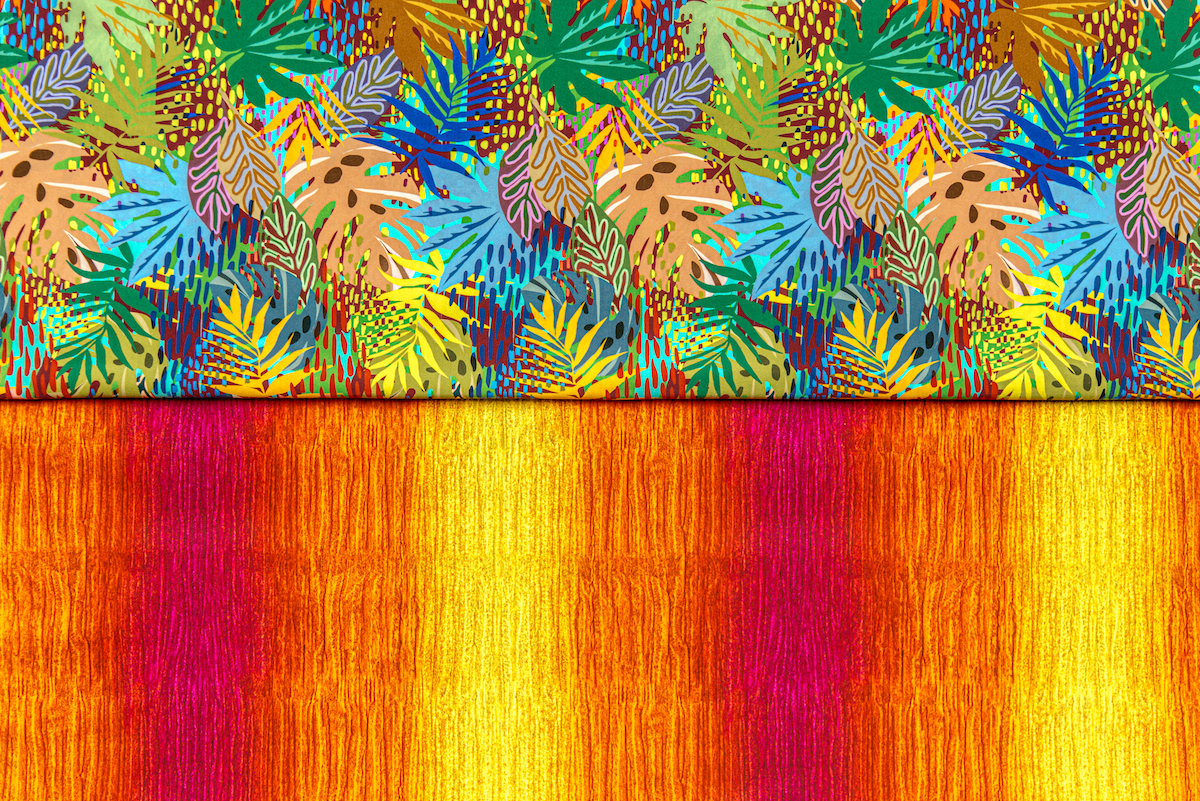
The Lenzing Group announced the expansion of carbon-zero Tencel branded fibres to Refibra technology, to address the growing industry demand around circular fashion and carbon neutrality. Explaining that the first carbon-zero Tencel branded lyocell and modal fibres, which launched last year, have continued to gain momentum among industry partners including fashion brands and mills. The aim is to hasten the decarbonisation of the textile industry with an ambitious Net zero by 2050.
The polymer-based treatments offered by Portuguese printing specialist Adalberto add lasting water-repellent and anti-bacterial properties to any textile, manmade or natural. Other areas in Smart Creation showed dyeing innovations like waterless systems, or colours derived from natural sources, food, vegetables, flowers, and several examples of traceability developed by different systems.
Physical and digital
Extensive samples by knit companies from Portugal, Spain, France, Turkey, Belarus and Taiwan showed in the physical and digital platforms with high tech features. Fabrics from Portugal including Malhas with examples of organic cotton; DjIc, vertically integrated Taiwan knitting company, including soft looking fabrics in purple, greys, smooth surfaces and drapes. Many blends used higher proportions of natural fibres with perhaps only 20% synthetic content.
Coupled with pandemic-driven conversations on industrial sovereignty, particularly in the textile industry, and a growing demand for more transparency, lower consumption and more renewable materials from consumers, the linen sector is currently revitalizing its historic production region that spans Northern France to Belgium and developing systematic ways of tracing fibre and fabric.

The wealth of options charmed buyers, offered by some 750 companies physically at the show, and the 150 more presenting digitally on the Première Vision Marketplace, drawn from 40 countries.
Interest in recycled materials was said to be fuelled by shortages of specific raw materials, including some cotton leading to higher prices of many virgin materials. Natural fibres like cotton, silk, linen and hemp were riding high, with wool a major source of fashionably soft caressing effects, with mohair and alpaca. Some reports circulated of factories reopening in Europe and greater production planned of raw materials in the offing across the board.
Gilles Lasbordes Managing Director, Premiere Vision, welcomed the number of visitors from abroad who had attended the physical show, but the figure was not announced. There is no doubt that there was a buzz as buyers sought out novelty and quality to revitalise the trade and renew face to face encounters.
View more fabrics at Premiere Vision Paris September 2021…

Subscribe To Our Newsletter
Join our mailing list to receive the latest news and updates from our team.



